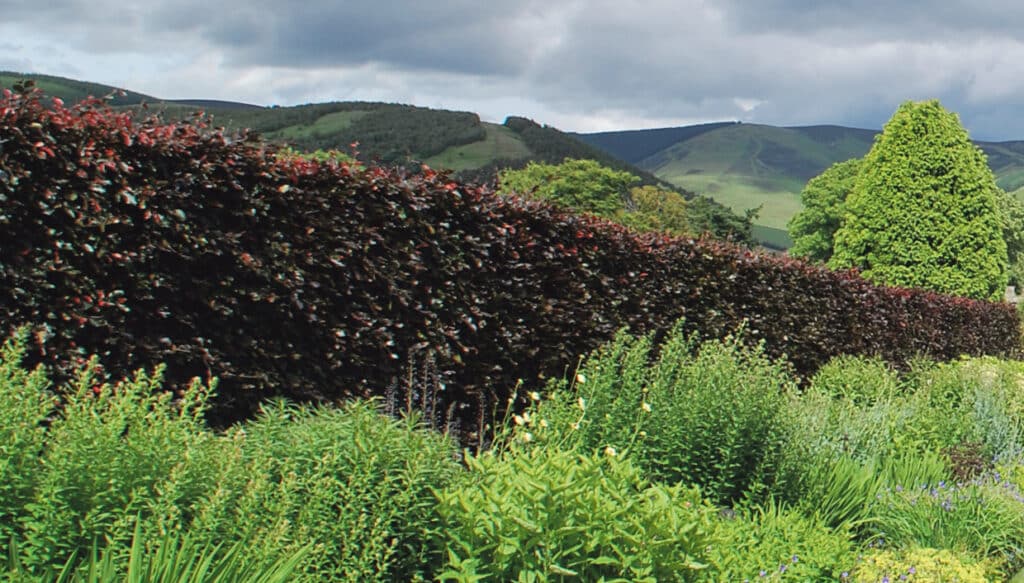Beginning in this issue, Mags Riordan of Bumblebee Farm is going to guide us all through the planning, planting and caring of a bed for cut flowers. By the time summer arrives the bed should boast an abundance of pollinator-friendly flowers ready for cutting and enjoying.

The glorious weather in the first week of January was just the tonic to prepare me for 2021. January for me is all about planning with planting plans, successional sowings and scheduling for the year ahead. Our Valentine’s, Mother’s Day and Easter flowers were all planted from last September with the majority under cover in tunnels. There’s always the temptation to get an early start with seeds, especially if you have a protected area to do this, but my advice is to wait because they can get leggy waiting for the weather to warm up sufficiently for planting out. Those sown in February or March will come on much better and probably overtake the earlier January sowings.
There’s still plenty to be getting on with like cleaning and disinfecting containers and seed sowing materials. Do an inventory of what you have, what you’ll need to replace, check tools and possibly service them all, to get ready for the coming season.
I don’t tidy up at this time of year because winter flying insects need cover but with the bare bones of the garden exposed it’s the best time to evaluate and put that plan in place for the coming year. I do prune out the straight stems on my contorted hazel and prune back my wisteria but other than that, I leave well alone until March.
With the prospect of extended lockdowns for the first half of the year and to mind our mental health, as much as our physical health, we’ve put together a simple planting plan for you to have a supply of cut, edible and pollinator-friendly flowers all summer long. My recommendations are for annuals, as these are the easiest group to start with. How you grow for cut flowers is different to how you grow in a garden situation.
Cut flowers need six to eight hours sunshine so do choose a south facing area for your cut flower bed. The plan is for a 120cm by 275cm. This will give you an abundance of cut flowers for your home all summer long, edible flowers for eating, cooking with and a vital food source for our pollinators.
The first step is to decide where to place your bed. Out of view is best because you’ll be cutting these flowers not admiring them in the garden. Soil preparation is key; whether you’re using no dig or till method, you have to prepare first by digging out all weeds – perennial and annual – and working in organic matter like well-rotted manure and an organic slow release fertiliser. Then cover over the soil with black mypex, cardboard or some kind of mulch, at least 15cm thick, paying close attention to edges. This does two things: It stops weed seed germinating and helps warm up the soil ready for planting.
All our recommendations are easy from seed:
• Calendula art shades
• Cosmos mix
• Marigold (tagetes) jolly jester
• Cornflower classic mix
• Antirrhinum majus (so many to choose from but try to avoid F1 hybrids as pollinator food quality isn’t great)
• Orlaya grandiflora
• Feverfew
• Zinnia Benarys Giant mix
• Nigella damascene mixed
• Rudbeckia hirta rustic dwarfs
• Nasturtium (compact varieties recommended although short stems, trailing varieties, will need trellis support)
• Mint (grown in containers submerged in soil) basil mint highest oil content, great for cooking/pestos, grapefruit best cut flower mint, apple mint most refreshing, tactile and emotionally supportive mint.
Those of you that were at our open days will have some of these already.
We’re going to do this together in real time. Sunday, January 17 at 4pm we have an Instagram live where we’ll go through everything: Preparing your plot, containers, seed mix, seed choicesand so on. Expanded blog posts will also be added to our website answering any questions you may have.
A full downloadable PDF planting plan with recommended spacings, numbers and varieties will also be available. All you need do is email hello@bumblebeeflowerfarm.ie and we’ll send it on to you.
Looking forward to being part of a growing community.
Bee Kind.


